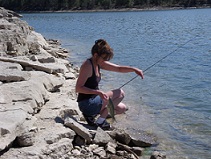Pond Boss subscriber Shane Howell of Dallas stepped on rocks near one of five shoreline feeders surrounding his spanking-new 30-acre Oklahoma lake. He pushed the timer button, then stood back to watch the action as thousands of tiny protein-laced nuggets pelted the water’s surface. 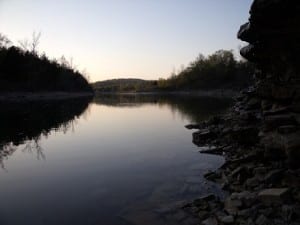
Hundreds of young bluegill and fathead minnows welcomed the offering, and quickly dispensed with the free meal, in a frenzy fit for starving piranha.
“We designed and stocked this lake to become a trophy bass lake,” Howell said with a smile, “and part of our management plan is to feed the baitfish.”
Feed the baitfish? What gives? Why put protein pellets in the water that the top-end gamefish may or may not eat?
Those are questions many fish pond owners ask themselves. Should you feed your pond fish? Nationwide, biologists disagree on the issue of feeding pond fish.
Proponents point out that high-protein pellets supplement the natural food supply in a fish pond and directly boost growth-rates among certain species, while indirectly improving the rates on some others. Rainbow trout, for instance, can be fed like so many barnyard chickens.
Then again, you might hear some negatives, such as: It’s a commitment. The cost is prohibitive. Feeding causes fish to congregate, altering their behavior. It’s like welfare. Pellets aren’t “natural” in a pond. Water quality is changed, forever.
So’s which side is right? Here’s how to decide the issue for yourself.
If you want to expedite growth-rates of bluegill, catfish and trout, or if you want to increase standing crops of fish in your pond, the answer is simple. Feed the fish.
For every two pounds of protein-rich, pellets (I recommend the floating variety) a group of fish consumes, those fish collectively gain a pound. The fish in your pond now weigh one more pound than before. Two pounds of feed, a pound of fish, and so on.
Let’s look a little deeper into the numbers. The best fish foods cost about 30 cents a pound. So, 60 cents of feed grows a pound of fish.
Stocked any fathead minnows lately? Priced at $10 a pound, fathead minnows can not compete with commercial pellets when it comes to feeding your pond fish.
Trying to grow huge largemouth bass? So many Pond Boss readers are.
Ol’ Bucketmouth won’t dare eat a prepared, pelleted diet. Heck, sitting atop the food chain, with a mouth big enough to swallow a cantaloupe, bass can eat anything in the pond, especially living critters. Bass snub tiny little pellets. Largemouth have bigger fish to fry, so to speak.
But what does a largemouth love to eat? Bluegill. And Mr. Bluegill loves to eat pelleted fish food.
Aha. Feed the fish that feed the bass. By so doing, you have created your own miniature food chain.
A well-managed pond, covering half a surface acre up to three acres, can grow and maintain 200-to-300 pounds of channel cat or trout along with 200-to-300 pounds of forage fish, per surface acre. That’s with an abundant supply of bluegill and other forage species. But, if you were to add high-protein fish food, the same pond can easily double that production.
Arguments arise. Is feeding a commitment? You tell me.
Much of the U.S. has at least 200 days of growing season, slightly less in the Upper Midwest and northern New England, fewer still in Canada. For the sake of creating a model feeding program for a mythical pond, let’s just say you intend to feed only three or four days, maybe five days some weeks. 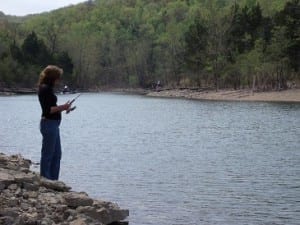
Your fish consume all of what you feed, say four pounds a day per surface acre of water. Over the course of 150 days, you feed 600 pounds of feed. Those 600 pounds of feed yield 300 pounds of fish, doubling your ponds natural production capabilities.
Do the math: Six hundred pounds of feed, at 30 cents a pound … $180. Less than $200 to put 300 pounds of weight on your fish. Cheap. I consider that a bargain.
Can you feed more? Sure, but be careful.
Two pounds of feed yields a pound of fish, but there is a balancing act to consider. For every pound you feed to the fish, there’s a pound of nutrients, some converted to energy, some processed by the fish and expelled into the water as waste. When waste dissolves in your pond, the water must process it.
Too much feed can result in too many pounds of fish, too many pounds of waste, and ultimately, problems with your water quality, if your pond water can not work with Mother Nature to clean up the extra mess. In extreme cases, I have seen overfed ponds end up with massive die-offs related to poor water quality and low levels of dissolved oxygen.
Feeding catfish? Grow Mr. Whiskers to two pounds, then catch and eat the little darling. Want bigger catfish? Stock lower numbers in the beginning. Want to name them? Stock fewer yet.
In short, do not overfeed, or plan on removing a few fish as you go along. Otherwise, your fish and your water quality will suffer.
Here’s one of my Rules of (Wet) Thumb: Never feed more than 10-to-20 pounds of floating fish food, per surface acre, per day.
Theory can get a little complicated, since young, fuel-burning fish, converting at a rate of 2-to-1, will eat 3 percent of their body weight per day during the growing season. So, keep your feeding program simple. 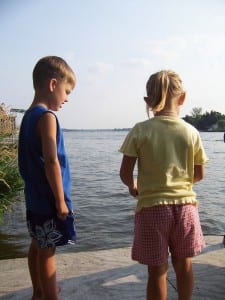
To keep it simple, I recommend that in most sportfishing ponds that you feed no more than twice a day, for brief durations, once in the morning, once in the late afternoon. Feed only what the fish will clean up 10-to20 minutes. Otherwise, you’re wasting your money to watch the wind and waves carry your pellets to the other side of the pond.
Either way, keep your feeding program simple and consistent. Feed from the same place, same time, each day. As your fish grow, you may discover that where you once were feeding for production, now you are feeding to maintain. That’s when you reach decision time.
Do you feed the same amount of feed, to the same number of fish that stay the same size? Or do you reduce numbers to increase individual size?
Some biologists contend that feeding fish is akin to welfare. It creates an artificial environment. Point well taken.
Granted, when you offer pellets to a fish, it tends to leave the real world of fish-eat-fish. But it’s a balancing act. The fish you feed are not necessarily taken out of competition, but they compete less with other fish for natural prey in your pond.
In that regard, feeding pellets makes “more” natural food, to be distributed among all fish, not just a few. This increases a pond’s ability to support fish — the very point of pond management. 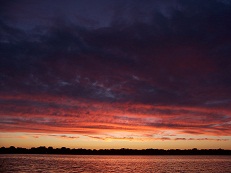
Critics say a feeding station tends to congregate fish, to pull them away from their natural underwater home. Absolutely. When the dinner bell rings, fish come from as far as 100 feet away.
Bluegill and minnows surface to attack the pellets, then disappear just as quickly as they came. Hybrid stripers can put on quite a show of force when they gulp down pellets. Bass take note, too. A big bass will not be attracted to the pellets, but to the creatures partaking of the free offerings.
After all, bass won’t turn down an easy meal either. Bluegill eat fish food; bass eat bluegill eating fish food. In nature, there’s always a payback.
Too many fish can jeopardize water quality, so feed less or reduce the number (or size) of the fish. One option is adding an aerator. The tiny air bubbles bursting at the surface help Mother Nature to combine oxygen and sunlight in helping to flush or “burn” the waste products.
Rule of (Wet) Thumb: Buy good fish food. Read the bag tag, make sure the feed contains at least 28-to-32 percent digestable protein. Read the ingredients, looking for the words “fish meal.” If you don’t see those words, don’t buy the food.
For best results, use only feed intended for fish. Feed dog food to dogs, monkey food to monkeys. Your fish deserve the real meal deal.
When it comes to feeding, pond owner Shane Howell has it figured out.
“Since our goal is to grow trophy bass, and this is the first year our lake has been stocked,” he said, “we decided to grow as much baitfish as possible, to grow the biggest bass possible.”
Howell knows that it takes at least 10 pounds of baitfish for his bass to gain a pound. In his fishing hole in south-central Oklahoma, five feeders pitching out 10 pounds of feed each day will set the buffet table for his bass to grow as fast, and as large, as they can.
Howell has done the math … 10,000 pounds of feed over 200 days will produce an extra 5,000 pounds of baitfish for the 1,500 Florida bass fingerlings he recently stocked. That’s an extra 170 pounds of baitfish per acre, (above what the lake produces without feeding) that will make his bass grow to large sizes much more quickly than a “normal” lake of similar size.
The irony of Shane’s program is that when he buys $3,000 worth of feed, the largemouth will be growing rapidly, without eating so much as one pellet.
POND BOSS Magazine is the world’s leading resource for fish, pond and fisheries management information including discussions on muddy water, raising trophy fish, fish feeding, building a pond, algae control and more. Check us out at www.pondboss.com or contact Bob Lusk, the Pond Boss himself, at 903-564-5372. His books, Basic Pond Management, Raising Trophy Bass and Perfect Pond, Want One, may be purchased by calling 800-687-6075 or ordering online at www.pondboss.com
